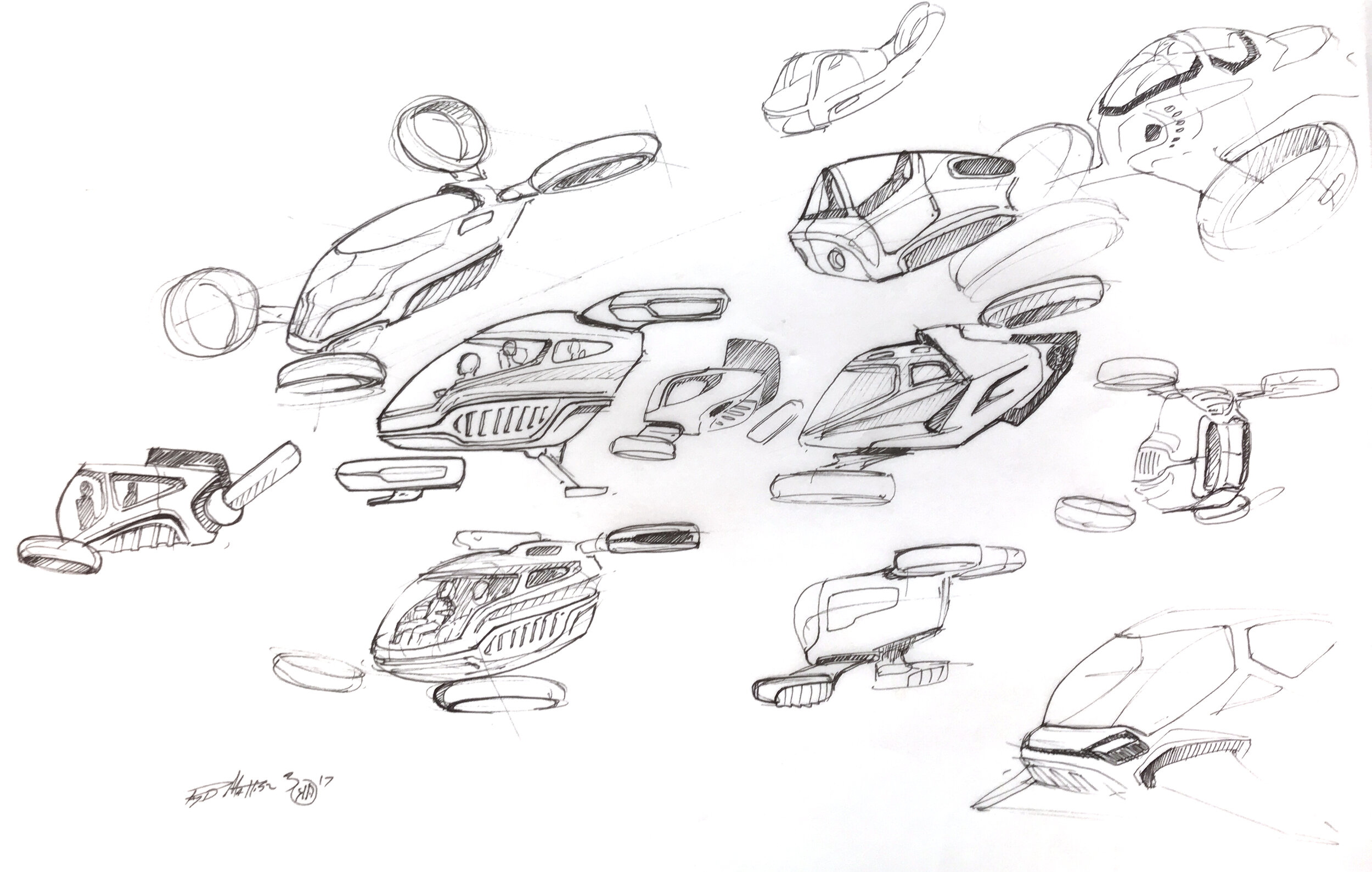AIRIS: Our Next-Level EVTOL Design Concept
AIRIS: Our Next-Level EVTOL Design Concept
Back in 2017, Uber published a document titled “Uber Elevate,” which detailed the company’s plan to design, build, and pilot a fleet of EVTOL aircraft, essentially creating a market for “air taxis” using their now-ubiquitous app.
UBER ELEVATE
Inspired by the possibilities of EVTOL aircraft, our studio designed AIRIS
EVTOL aircraft are designed to fly short distances in high-density, high-traffic areas. Passengers would be able to skip slow commutes.
Consider the possibilities: tourists in Las Vegas staying at the Luxor could fly to their Cirque show at the Mirage. Miami cruise-goers could be flown from MIA to the ship deck. Regional airports could forgo costly and unpopular CRJ 200s for a sleeker, faster, and more cost-effective Airis fleet. It’s important to note that with EVTOL aircraft, you don’t need a runway, a tower, or any of the infrastructure associated with traditional airplanes.
Let’s talk about design details. AIRIS was inspired by the sleek, cool aesthetic of manta rays. It’s good looks also serve a good purpose: we designed it to meet all ADA requirements, making it handicap accessible. The cabin is entered through a large clamshell door and, in the spirit of making urban mobility accessible to everyone, comes complete with a wheelchair ramp
AIRIS is designed as a hybrid: the combination of a drone and a traditional airplane. Note the lift fan on the top and the thrusters on the wings. These enable you to take off from a parking lot or rooftop. An airport isn’t necessary. When the aircraft travels fast enough, the lift fan turns off and it flies using its wings like a traditional plane. This design feature would extend it’s range more than five-fold, and doubles the aircraft’s speed.
We hope that someday AIRIS will be on display at EAA’s AirVenture in Oshkosh. Until then, we’ll be can be found arguing straight vs V tail Bonanza’s at SOS Bros. Cheers!
AIRIS also clearly outlines our studio’s design capabilities:
Sketching
Concept design
Styling
CAD Design
Photorealistic Rendering
VFX
Composite design
HMI (human machine interface)









